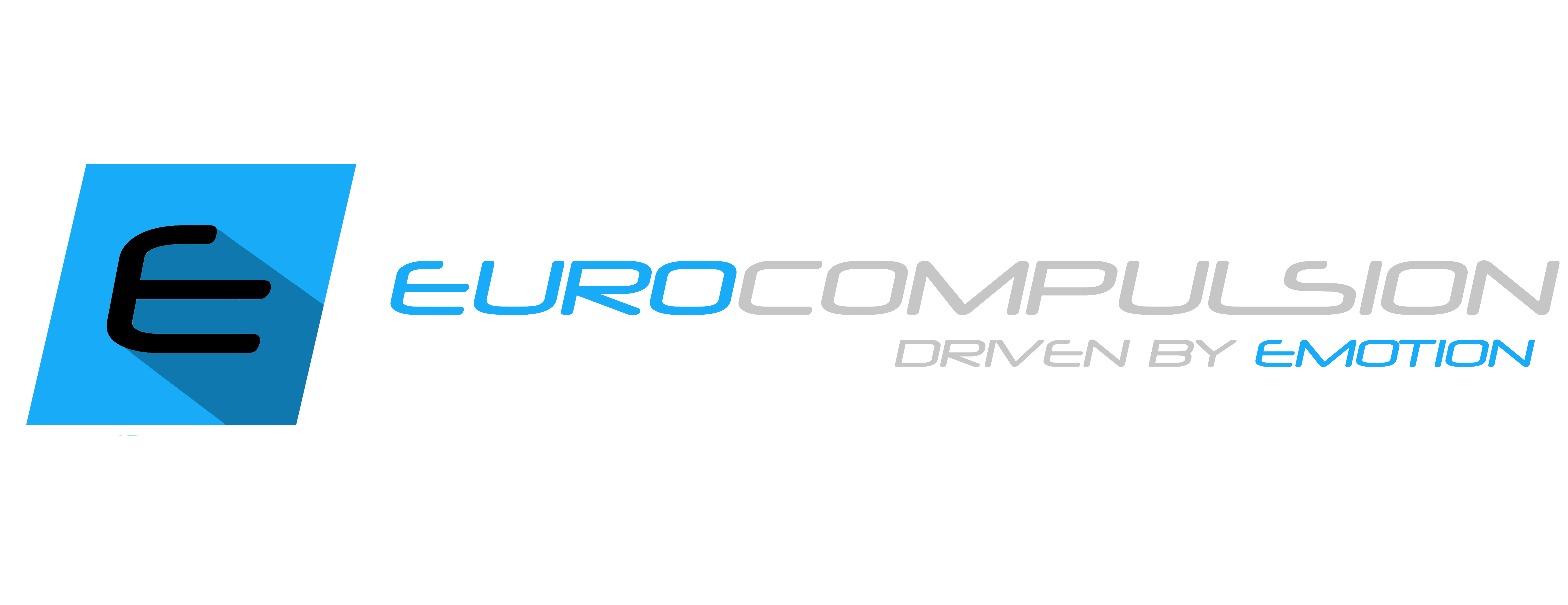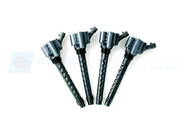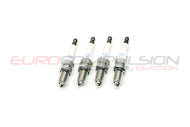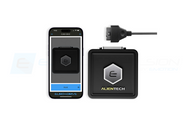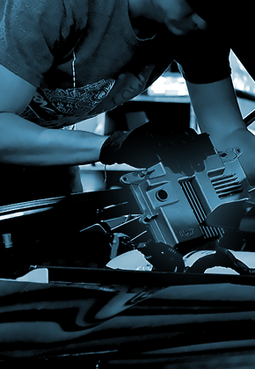
ALL WATER METH PRODUCTS CAN BE PURCHASED HERE
http://www.alcohol-injection.com/en/
Introduction:
If you are reading this, hopefully it's because you are interested in water injection. At Eurocompulsion we sell water injection systems, and we use them on nearly every single turbo and supercharged car we own. However, the purpose of this article probably isn't what you think. It's not to sell water injection systems. The purpose is to prevent someone who won't benefit from water injection from spending their money on it. Yes, we want to sell you stuff, but we are in this for the long haul. We want to sell you stuff that will benefit you so you keep coming back to us for the good results we deliver.
There are a lot of myths surrounding water injection. Some have been created intentionally, but most are created by simple misunderstanding.
Before I go any farther, I should state where I am getting my information. Obviously some comes from my own experience. However, a lot of it, and especially all the engineering stuff comes from NACA. For those of you who don't know who NACA was, it was the agency that turned into NASA in 1958. Up until that point, the agency primarily dealt with aviation and did a lot of work advancing the development on piston engines.
Most of their work on this subject was done just prior to, or during World War 2. During this era, NACA put together teams of the best engineers and scientists, they could find, and gave them a nearly unlimited wartime budget to test and develop water injection. I think the data they acquired is the best you can possibly get.
A lot of the NACA information has been misunderstood, and is often misquoted, or quoted out of context. It's a little difficult for a typical car guy to figure it out, because all their reports are written in aviation and engineering terms. I am an active pilot, and a former flight engineer, so I translated the relevant data to automotive terms and have relied on it with great success over the years.
History of Water Injection:
To fully understand water injection's purpose it really helps to understand the environment surrounding its development.
The first people to use it extensively were the Germans in WW2. The Germans had a serious problem. They didn't have high octane aviation fuel that could compare with the stuff the British and Americans were using. In the early part of the war, the Germans had 87 octane fuel compared with the allied 100 octane.
The German solution to this problem was similar to what a lot of of automotive hot rodders would do. They put the largest possible engine in the smallest possible airframe. The relatively small German fighter, the ME109 had a 34 liter engine vs. the British Spitfire and Hurricane with 27 liter engines. It was also had a much more advanced supercharging system and fuel injection. In the early part of the war this gave it similar performance to the British. Of course there was a big downside, and that was aircraft range. The small plane couldn't hold a lot of fuel, and the big engine drank fuel like there was no tomorrow. Still, they had the performance they needed to keep up in spite of their inferior fuel.
The nice drawing is of a later model 109 that would have has water injection. Notice the large round ram air scoop for the supercharger just above the exhaust stacks.

Fast forward a couple years. The Germans now had 96 octane fuel, but the Allies had 130 and 150 octane fuels! That's just too much difference to make up via conventional methods. Sure they enlarged and improved their engines slightly, but their planes just couldn't run enough supercharger boost to keep up.
The Germans were desperate. They came up with a number of clever solutions, but the one we are concerned with, and arguably the most successful was water and or water/methanol injection. With water/meth injection they were able to add enough boost to get their engine from 1455 up to 1973 horsepower, at which point the limiting factor was not the water/meth system, but mechanical limitations. Furthermore they could make that power on crap fuel that was being used by the 3rd Reich near the end of the war.
The 109's engine, the DB605. It a 35.7 liter inverted V-12 with a supercharger, water injection, 4 valves per cylinder, and fuel injection. Notice the unusual placement of the supercharger. The Germans loved to drive superchargers at a 90 degree angle to the crankshaft, but that's a story for another time.

The Allies followed suit, and added water injection to some of their planes as well but the end of the war and the advent of the jet engine limited the future of water injection in military fighters.
The US P47 Thunderbolt. Supercharged, Turbocharged, Water injected AWESOMENESS. Why is is so fat? Intercooling baby! Lots and lots of intercooling and associated piping to carry boost from the rear mounted turbo up to the engine mounted supercharger. No, joke, the whole plane was designed around it's intercooling turbocharging and supercharging systems and they took up a lot of space, but gave huge levels of performance at very high altitudes.

So what's the point of this WW2 aircraft history? There are two points:
1. Water injection is not some snake oil fantasy. It can allow large increases in power and was developed by the top scientists in the world at the time and used to provide an advantage in the life or death struggle of air combat.
2. It was specifically developed to allow more boost than the octane levels of the available fuels would allow. It's not a power adder, it's an anti-knock device, much like higher octane fuel. That allows more power via more boost and or ignition timing.
How it Works:
Water injection works by cooling the air in the combustion chambers to prevent knock (detonation). It is not a power adder, like Nitrous Oxide. It is not an intercooler like, well..an intercooler. It's effect is entirely analogous to using higher octane fuel.
Just how effective it is depends entirely on how much water you spray in. Of course if you spray too much it will quench the combustion and reduce power. We generally don't want that. If we don't spray in enough, it won't provide meaningful knock protection.
How much do we need to spray? Well, it depends. The best way to calculate the needed amount is to base it on fuel flow. You could do this calculation by airflow, or by horsepower, but there are some good reasons to base it off fuel flow, and we will cover that soon.
For our purposes in the Fiat 1.4 turbo, anything less than a .2:1 water to fuel ratio (meaning we spray 2 pounds of water for every 10 pounds of fuel the engine is using) is a waste of time. You need at least that much to get meaningful knock protection. You can go as high as .6:1 before quenching combustion becomes a problem.
The issue of quenching combustion is actually a little complex because it's not exactly related to how much water you spray. It's directly related to total fluid being sprayed in, meaning gasoline AND water. Thus at lean mixtures you can spray a lot more before you quench combustion. I'm simplifying here, but essentially at very rich mixtures like an air fuel ratio of 10.5:1 you will loose some power if you spray water at a .6:1 rate, but at a 14.7:1 AFR you won't. A ratio of .2:1 will not cost any power at the air:fuel ratios normally run on the this engine.
Here is a chart with actual numbers from NACA showing the effects of various air fuel ratios and water:fuel ratios. Notice that at a very rich mixture and at a .4:1 or .6:1 water:fuel ratio, power suffers.

I need to be very clear about this next statement. There is no case where an engine tested by NACA had ANY increase in power with water injection UNLESS it was using fuel that didn't have enough octane to support the engine's specs. In other words, unless it's suffering from knock (pinging, detonation or whatever), water injection won't add any power. This is something most people, don't understand, and most vendors don't fully explain.
If you have been reading about water injection you may have come across claims that it's some sort of "chemical intercooler", or that it cools the charge air and increases density resulting in power. That's absolute BS. While it does cool the air, that's how it prevents knock, it does the vast majority of the cooling in the combustion chamber on the compression stroke where no increase in density from cooling is possible. The cooling that takes place before the intake valves is absolutely trivial by comparison and offset by the humidity increase.
Some people have a hard time understanding how you can cool air and not have an increase in density. Ironically, they always say wait, but "physics" says colder air is more dense. Well, no it doesn't, it depends on other conditions. For example, picture a sealed tank, like a scuba tank. If you put it in the freezer, do you think the air density inside will increase? Of course not because it's a sealed container, the number of O2 molecules for a given area (in this case the area in side the scuba tank) can't increase because it's sealed. Your engine's combustion chamber during the compression stroke is also sealed once the valves are closed, and that's when water injection does most of its work. Some may disagree with me on this, but NACA proved this point over and over. Water injection does not provide any useful increase in air density, more often than not it causes a slight decrease.
So if water injection doesn't give us more power, and it might even decrease power if not set up correctly why do we want it? We want it because it offers massive knock protection. If every local gas station sold 98 octane fuel for the same price as 93, you would use that wouldn't you? That's sort of what water injection does for you. That extra octane could be used to insure the engine's knock sensor never gets triggered and pulls power back. Better still it can be used to safely and effectively increase boost and timing and get more power.
Just how effective is water injection in terms of anti knock capability? It's extremely effective. At a .6:1 water:fuel ratio, it gives you the same anti-knock performance with 93 octane pump gas as you would have with 116 octane fuel. That's huge. Based on the same numbers a low .2:1 ratio will give you about 99 octane and .4:1 about 105.
How much more power can water injection give you? As an example, NACA was able to DOUBLE the power of an Allison V-12 using water injection and accompanying huge increases in boost. Now it's important to understand this was in a lab with very controlled conditions, but in the real world, 50% increases are realistic if the rest of the forced induction system can provide enough charge air.
This Chart shows the increases in power NACA was able to get with water injection. Note that by richening the mixture they were able to add enough boost to get it from 750hp up to 990hp. With water injection they were able to get it up to 1550hp, and by using water injection and a rich mixture, all the way up to 1625hp. Notice the massive about of boost increase allowable with water injection.

Setting it up, plus various kits and options
For this next section I'll assume that you are going to run water injection and have a good reason for doing so. Maybe you live in Death Valley California and it's 120F in the shade and sometimes you car pulls power due to the knock sensor.

Perhaps you have a tune and it's fine most of the time but in back to back autocrosses in the Texas summer, it's heat soaking and knock is holding you back. Perhaps you are running Unichip with our Stage 2W map (which requires either water injection or winter weather), or better yet, you have Euro+Drive Lite with the self tuning option and want the extra protection while you test higher boost levels. Whatever the reason, if you are reading past this point, I am assuming you need water injection.
Water injection systems are simple, but like everything else in the automotive world they are not trivial, and have to be done right to get any real benefits.
Most systems work like this. At a given amount of boost, a pressure switch triggers a pump, which turns on and draws water from a tank and sprays it into the intake system. This spray is a very fine mist, it looks like fog, not like spray from a garden hose. When the boost drops back down, the pump shuts off. There is usually a check valve to prevent water from draining from the tank and entering the intake unless the pump is running. The check-valves normally requires a lot of pressure to open, so unless the pump runs, they stay closed. There are some cases where solenoids are used for this instead of check valves, but I don't recommend that.
There are dozens of companies selling water injection systems. Most of them sell essentially the same stuff. For the most part they are all essentially repackaging agricultural spraying equipment and primarily vary in their various electronic controllers which are pretty unique to each company. More on these later. I generally use components from Devil's Own and Cooling Mist. Full disclosure, our EC water injection kit is made largely from Devil's Own components.
A Typical Water Injection System

Regardless of which kit you buy, one of the first questions you will have to ask yourself is how do you want to control it? Do you want a simple on/off with a pressure switch, or a sophisticated electronic controller. Strangely, in the Fiat/Dodge 1.4T, you want the on/off switch. If you have read the water injection chapter in my supercharging book, that's probably a surprise to you as I strongly advocate the controllers in that book, but there are some things that make the 1.4T different.
What we want to do is match the water injection to the fuel flow to keep the water:fuel ratio as close to what we want as possible. There is no way to match it perfectly in this car with commercially available stuff, but we can actually get it close enough. Here is the problem with the controllers. None of them will work to control the water spray properly with this car. Some of them work based on inputs from the car's air flow sensor. Well, the 1.4T doesn't have an air flow sensor, so that's out. Some work by increasing spray as boost rises. That's great, but boost stops rising in this car at about 3000rpm and starts to fall pretty fast at the high end. We don't want the system to reduce spray at high rpm, so these just won't work. Boost rises so fast in this car, that even if you do use a controller system that turns on say at 10 psi and reaches full spray by 18psi, it will essentially act just like an on/off system anyway because the turbo goes from 10-18psi so fast in this car.
So, can we keep the water:fuel ratio in an acceptable range with a simple single nozzle on/off system? Actually we can. in this car we have two things that work for us in this case. First of all you need more fuel, and thus more water as RPM rises or as Boost rises. With CONSTANT BOOST you will generally need twice as much water at 6000rpm as you needed at 3000rpm. Thus if you have a .6:1 spray at 3000rpm and it's a constant rate, you will have a .3:1 ratio at 6000rpm. That's actually not too bad, and it's why single stage systems work. However in our car it's much better than that.
A simple on/off Pressure switch is the best way to control water injection on the 1.4 Turbo.

The 1.4T runs peak boost in the mid range, and it drops off as RPM increases. that means fuel flow doesn't increase at the rate it would if boost was constant. This works in our favor here because as engine RPM rises, the boost decrease reduces the need for fuel and thus water. The 1.4T's air fuel ratios work in our favor here as well. Remember that at leaner mixtures like 14.7:1 you can spray more water without quenching combustion. Well, in the 500 Abarth it runs mixtures of 14.0:1 or leaner at full throttle up to about 4000rpm. So we can easily spray .6:1 when we first turn the system on. At 5000rpm, the car starts to go very rich, as rich as 10.5:1, thus we want to reduce the water:fuel ratio anyway. Plus the extra fuel helps to prevent knock so the need for water is reduced.
Let's put numbers to all of this. A stock 1.4T puts down 160hp (let's not argue about that just yet). We will set up our system to spray about 4 gallons per hour. We should set the ON/OFF switch to trigger at about 12psi, that way the pump will spin up and be fully spraying by about 3000rpm with no trouble. At that point it will give a water:fuel ratio of .6:1 and will be doing so at the point when the stock ECU is running a relatively lean air fuel ratio, so power won't be quenched at all. Effective octane at this point will be about 116. Now as RPM and power rises, the water:fuel ratio will decrease, but not too badly. At peak power it will still be .33:1, plus the AFRs will be richer. Effective octane will be around 98! So with a simple on off system on this car the water:fuel ratio will stay in a range where it won't quench power and will provide a lot of knock protection.
What if you are running a peak power level of 200hp, which is quite possible with a lot of the options on the market. Thats 25% more power, which generally uses 25% more fuel (I am simplifying here) so a water injection nozzle 25% bigger will do the job. For a 200hp 1.4T I suggest starting with a 5 gallon per hour nozzle. For a stock engine I suggest a 3 or a 4. If you live in a cool climate a nozzle as small as 2gph would be acceptable.
Now these are litearlly the nozzle sizes I suggest, but you may benefit from trying a different size in each direction. If the car bogs down at 2500rpm you could adjust your switch to turn the system on a little later, or if that's not an option, switch your 4gph nozzle for a 3. Your ignition system is a factor here as well. If your spark plugs or coil packs are weak, even a small amount of water could quench the combustion when the mixture is rich. It's important everything be in good condition when modding!
That was a lot of text to go over nozzle sizing, but I find the most common problem is that people don't spray nearly enough water. I once received an email from a guy who was LITERALLY a nuclear scientist. He did a number of calculations determining how much water he needed to spray, and found it just wasn't reducing knock and he couldn't make any more power. He couldn't figure out why not. It turned out his math was all correct, but he was doing the wrong math problem. He calculated (probably VERY accurately) how much he needed to spray so that all the water would evaporate due to the heat from the turbo boost. That's simply the wrong math problem. I asked him this: How much boost does your car have? The answer was around 15psi. How much pressure is in your cylinder during the compression stroke? Uhmm, around 200psi at cranking speed. So where do you think the most heat is located? Where do you think the water is going to evaporate? The answers are self evident. He wasn't spraying anywhere near enough water.
Enough about nozzle sizing. A big decision you will have to make is what size tank to use and where to locate it. I suggest going with at least a 1 gallon tank. With a 4gph nozzle, that will give enough spray for 15 minuets of contant full throttle. In practical terms that means about 2 tanks of gas in an Abarth , 124 or a Dart with spirited street driving, or about 30mins of track time. Better still is the 2.5 gallon race tank from Devil's Own. This is the tank I use and suggest. It's expensive, but totally worth it, and it looks cool. It mounts in the trunk and the pump mounts right to it, which makes it easy to set up.
The tank should be mounted in a cool area so I generally avoid mounting them in the engine bay. Some people use their windshiled wiper tank which can double as a water injeciton tank, but that has some real drawbacks. Not all windshield washer fluids are acceptable as water injection fluid, and the ones that work really well for injection work poorly as washer fluid. I strongly suggest a seperate remote mounted tank. Depending on your budget, go with either a 1 gallon or a 2.5 gallon tank.
Water Injection tank with pump mounts

I generally hook up two lights I can see from the driver's seat. (these are included in all EC kits) one light signals pump operation, meaning the system is on, and one to alert me of low fluid level in the tank. There is a fair amount of wiring to hook up in a water injection system, but it's not too difficult. Do the wires one at a time, follow the included diagrams, and you can't go wrong. WITH THE EUROCOMPULSION KIT, none of the car's factory wires need to be cut, so we do try and make this as easy as possible.
Installing our water injection system is not terribly difficult, but it is time consuming. Plan one full day, or two afternoons if you work slowly like I do.
Another variable is nozzle location. I suggest spraying right at the throttle body. Craven Speed makes an excellent throttle body spacer with a port of a water injection nozzle. I think that's the best way to go. There are alternatives. You can drill and tap a hole right in the stock throttle body, there is enough room there to do it. We can also include adapters to put the nozzles right into the stock rubber intercooler piping, or silicone pipes. The bottom line is you can put the nozzle anywhere between the intercooler's exit and the intake manifold. There are advantages to each location, but they are so small that it really doesn't matter if it's right at the intercooler exit, or at the throttle. If the nozzle is at the throttle and the pump is accidentally triggered while the engine is off (impossible if wired up correctly) it could liquid lock the engine, and you would have to remove all the spark plugs and crank the engine over to clear it out. Conversely if the nozzle is located really low, and the check valve fails a small amount of water will leak into the intake when the engine is off. It's not likely this would liquid lock the motor, but it would run like crap until the water cleared out. Neither of these scenarios are likely, but they are considerations. The post intercooler location has the advantage of allowing a small amount of the water to evaporate before the intake valves giving a theoretical gain in air density, although only about 1% and it's not really realistic.
We have run this engine with various nozzle locations, and I can assure you it just doesn't matter in terms of performance. Either at the throttle, or just after the intercooler will give the same level of performance.
You can NOT put the nozzle before the intercooler, and NEVER before the turbo.
I don't want to learn, just give me the answers!

I understand. Here are the quick answers.
If you have a stock engine, unless you are living somewhere it's over 100F a lot of the time, it's not going to be worth it. If you have a modified engine running over 25 pounds of boost, it's probably a very good idea to get water injection. If you are going to be doing self tuning, water injection may very well save your engine from your own mistakes.
For those of you in between, say someone with a tune or a good piggy back running 22-24 psi, then it's a bit of a toss up. There are some cases where the engine will be near knock, and you may get some benefit. I would say if you compete in motorsports and heat soak is a factor, it's probably going to be worth it, or if you live in a hotter climate.
Any water injection system on this car should run a 1 gallon tank as a minimum. For motorsports, run a 2 gallon or larger tank.
On a stock engine with good spark plugs and coil packs, run a 3gph nozzle, in colder climates 2gph would be fine. Most modded engines will need a 3 or 4gph nozzle. Big turbo engines running over 25psi should run 4-5 gph.
Set it up with an on/off system that triggers at 12psi. Don't bother with the extra expense of a controller. It won't do any good on this engine.
Locate the nozzle between the intercooler exit and the intake manifold. Craven Speed makes an excellent spacer for this purpose.
Run either straight clean water from a sink purifier, or distilled water. For extra anti-knock protection you can add methanol to the mixture but do NOT exceed a 51:49 ratio of water:methanol by weight.
In the winter you will need to add methanol to keep the mixture from freezing. I generally run 10%, that's plenty for this application even with the larger 1752 turbo.
